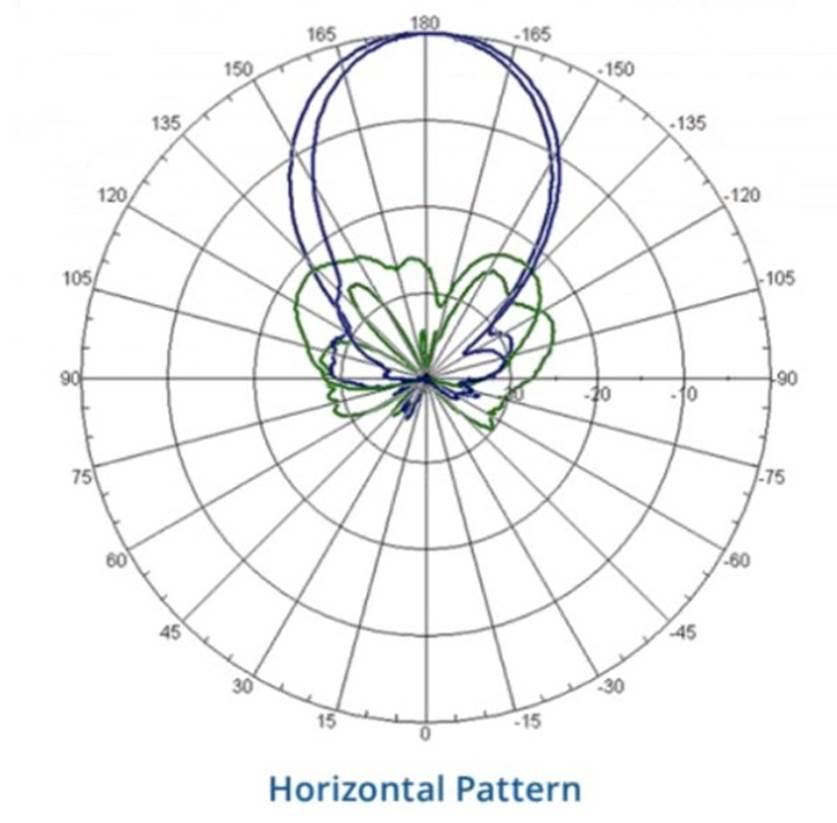What is an OSPF transit network?
Correct Answer:
A
An OSPF transit network is a network that has at least two routers that are connected by a multi-access link and can forward traffic for other networks1. A transit network is different from a stub network, which has only one router connected to it and does not forward traffic for other networks2. A transit network is also different from a virtual link, which is a logical connection between two areas that are not physically adjacent2. A transit network is not necessarily connected to a different routing protocol, although it can be if the router performs redistribution2. Therefore, the correct answer is C. A network on which a router discovers at least one neighbor.
Refer to the image.
Your customer is complaining of weak Wi-Fi coverage in their office. They mention that the office on the other side of the hall has much better signal What is the likely cause of this issue7
Correct Answer:
B
The likely cause of the issue of weak Wi-Fi coverage in the office is that the AP is using a directional antenna. A directional antenna is an antenna that radiates or receives radio waves more strongly in one or more directions, creating a focused beam of signal. A directional antenna can provide better coverage and performance for a specific area, but it can also create dead zones or weak spots for other areas. The other options are incorrect because they either do not affect the Wi-Fi coverage or do not match the scenario. References: https://www.arubanetworks.com/techdocs/ArubaOS_86_Web_Help/Content/arubaos-solutions/wlan-rf/rf-fundamentals.htm
https://www.arubanetworks.com/techdocs/ArubaOS_86_Web_Help/Content/arubaos-solutions/wlan-rf/antennas.htm
Your customer is having issues with Wi-Fi 6 clients staying connected to poor-performing APs when a higher throughput APs are closer. Which technology should you implement?
Correct Answer:
B
Wi-Fi 6 is an industry certification for products that support the new wireless standard 802.11ax, also known as ??high-efficiency wireless??. Wi-Fi 6 offers increased capacities, improved resource utilization and higher throughput speeds than previous standards.
Option B: ClientMatch
This is because option B shows how to use ClientMatch to optimize the wireless performance of Wi-Fi 6 clients on a UniFi network. ClientMatch is a feature that uses machine learning to analyze the traffic patterns of each client and assign them to the best available AP based on their location, device type, and network conditions2.
Therefore, option B is the best technology to implement for your customer??s issue.
1: https://help.ui.com/hc/en-us/articles/221029967-UniFi-Network-Optimizing-Wireless-Connectivity 2: https://help.ui.com/hc/en-us/articles/360012947634-UniFi-Network- Optimizing-Wireless-Speeds
With the Aruba CX switch configuration, what is the Active Gateway feature that is used for and is unique to VSX configuration?
Correct Answer:
C
The active gateway feature is used to provide active-active layer 3 default gateway for hosts on the same subnet. It allows the switch to convert multicast streams into unicast streams over the wireless link, which improves the quality and reliability of streaming video, while preserving the bandwidth available to the non-video clients. The active gateway feature is unique to VSX configuration because it eliminates the need for VRRP and avoids traffic being pushed over the ISL link, which can cause latency in the network12.
The correct answer to the question is C. Sixteen different VMACs are supported for each IPv4 and IPv6 stack simultaneously. This means that you can have a maximum of eight VMACs for IPv4, and a maximum of eight VMACs for IPv6, on a VSX pair. Only 15 VMACs are supported on 6400 switch series2.
The other options are incorrect because:
✑ A. Sixteen different VMACs are not supported total as shared. They are supported for each IPv4 and IPv6 stack separately.
✑ B. Active gateway can be used without MSTP instances. MSTP is a protocol that allows multiple spanning tree instances to coexist on the same switch, but it does not affect how active gateway works.
✑ D. Active gateway does not copy traffic over the ISL link for an optimized path. It avoids using the ISL link for routed traffic and uses the local switch interface MAC instead of the virtual MAC address (VMAC) for source address1.
What is true regarding 802.11k?
Correct Answer:
C
802.11k is a standard that provides mechanisms for APs and clients to dynamically measure the available radio resources in a wireless network. 802.11k defines radio resource management (RRM) functions, such as neighbor reports, link measurement, beacon reports, etc., that allow APs and clients to exchange information about the RF environment and make better roaming decisions. The other options are incorrect because they describe other standards, such as 802.11r, 802.11v, or 802.11ax. References: https://www.arubanetworks.com/assets/wp/WP_WiFi6.pdf https://www.arubanetworks.com/assets/ds/DS_AP510Series.pdf